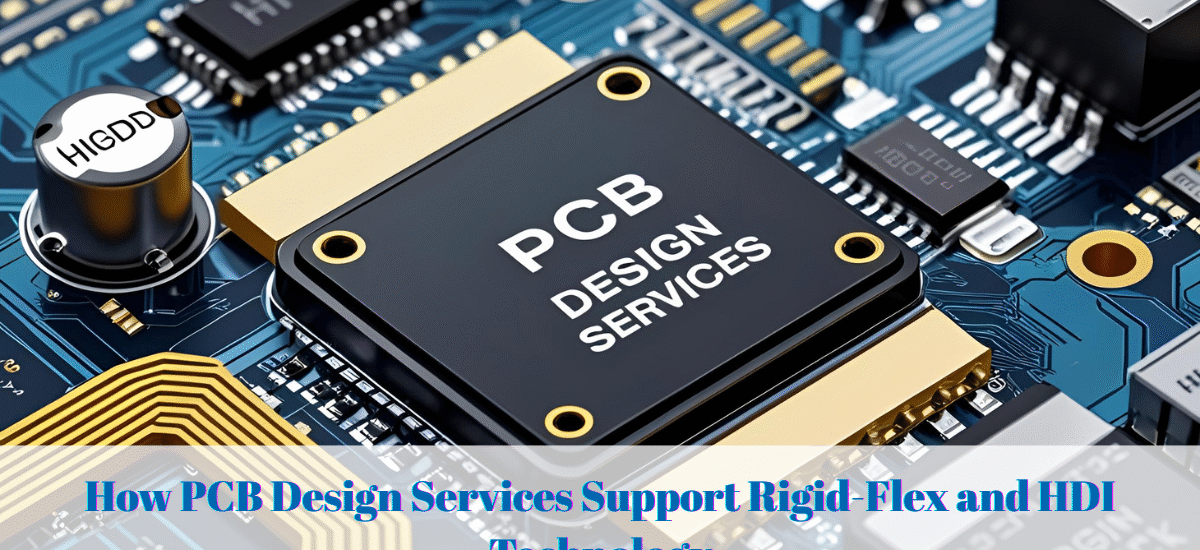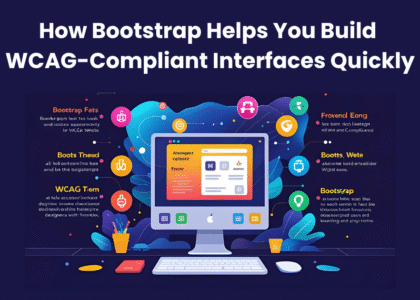With modern electronics becoming smaller, faster, and more interconnected, traditional printed circuit boards (PCBs) often fall short in terms of performance, space optimization, and flexibility. This is where Rigid-Flex and High-Density Interconnect (HDI) technologies play a pivotal role.
However, these advanced PCBs are not easy to design. They require meticulous planning, simulation, and validation. This is where PCB Design Services become indispensable. These services provide the engineering expertise and advanced toolchains necessary to bring complex Rigid-Flex and HDI projects to life, from concept through to manufacturing.
What Are Rigid-Flex and HDI PCBs?
Rigid-Flex PCBs
Rigid-Flex PCBs combine both rigid and flexible substrates in a unified board structure. The flexible areas are designed to bend and flex, while the rigid parts serve as sturdy zones for component placement.
Key features:
- Seamless electrical connection between rigid and flexible zones
- Space-saving 3D configuration
- Improved shock and vibration resistance
- Lower connector and solder joint failure risk
HDI (High-Density Interconnect) PCBs
HDI PCBs offer high wiring density through fine features, microvias, and complex stackups. They are ideal for miniaturized products requiring multilayered routing in tight spaces.
Key features:
- Microvias and via-in-pad structures
- Buried and blind vias for dense connectivity
- Thinner materials and smaller form factors
- Better electrical performance at high frequencies
The Growing Demand for Advanced PCB Technologies
Electronics industries are rapidly embracing compact and high-functionality hardware solutions. As a result:
- The HDI PCB market is projected to grow to $20 billion by 2027.
- The Rigid-Flex PCB market is growing at a CAGR of 12.1%, driven by medical, military, and foldable device innovations.
Consumer preferences for lightweight wearables, industrial automation requiring rugged boards, and 5G-enabled devices all demand more from PCB designs—and that’s where PCB Design Services come in.
Role of PCB Design Services in Rigid-Flex Development
Designing Rigid-Flex PCBs is a balancing act between mechanical flexibility and electrical performance. PCB Design Services provide the necessary expertise to manage this complexity.
1. Layer Stack Management
Rigid-Flex boards may require different material properties in different zones. PCB designers define zone-specific stackups and ensure impedance continuity and signal integrity.
2. Bend Radius and Flexibility Planning
Excessively tight bends can crack copper traces. Services use mechanical simulation to model stress and optimize bend geometry and trace placement to avoid fatigue failure.
3. Controlled Material Usage
Designers select appropriate polyimide substrates, stiffeners, and adhesives to ensure reliability in both static and dynamic flex conditions.
4. Transition Area Design
The area where rigid and flex sections meet is prone to stress and must be carefully designed to avoid delamination. Experts apply special rules, such as:
- Gradual trace tapering
- Avoiding plated through-holes near transitions
- Strategic stiffener placement
5. Special DRC (Design Rule Checks)
Flex regions have unique rules—such as minimum bend radius, copper-to-edge clearance, and unsupported spans. PCB Design Services enforce these to ensure manufacturability.
How PCB Design Services Handle HDI Complexity
HDI design pushes traditional design limits. Here’s how PCB Design Services ensure successful implementation:
1. Microvia Design
Laser-drilled microvias require precise design:
- Aspect ratio considerations
- Staggered or stacked via placement
- Via-in-pad designs to save space
2. Controlled Impedance Routing
For high-speed data transfer (USB 3.0, HDMI, PCIe), impedance must be tightly controlled. Designers simulate signal paths and adjust trace widths, spacing, and dielectric properties accordingly.
3. Sequential Lamination Strategy
HDI stackups often need 2-3 sequential laminations. Designers plan via structures to ensure alignment, proper registration, and cost-effective manufacturing.
4. Escape Routing for Fine-Pitch BGAs
Routing under BGA components (especially 0.4 mm pitch or smaller) is a major challenge. Services utilize:
- Microvias between layers
- Dogbone fan-outs
- Via-in-pad with filled and plated vias
Design Tools and Techniques Used
Expert PCB Design Services use advanced EDA platforms such as:
| Tool | Purpose |
| Altium Designer | Rigid-Flex zone definition, 3D modeling, DRC enforcement |
| Cadence Allegro | Signal integrity, high-speed routing, HDI stackup creation |
| Mentor Xpedition | Design reuse, constraint management, BGA escape strategies |
| HyperLynx | Impedance and SI simulation |
Other tools include stackup calculators, flex bend simulators, and thermal analysis utilities.
Benefits of Partnering with Expert PCB Design Services
Engaging professional PCB Design Services is not merely a cost-saving tactic—it’s a strategic move that can significantly impact the success of your electronics project. Here’s how:
Faster Time-to-Market
Expert designers streamline the entire development cycle. Their familiarity with industry-standard workflows and simulation tools reduces the number of design iterations, allowing products to move from concept to production much quicker.
Design Accuracy
Seasoned PCB designers are well-versed in IPC standards, fabrication tolerances, and component specifications. This ensures accurate stackups, trace widths, impedance profiles, and via placements—minimizing the risk of errors or costly rework.
Improved Manufacturability
Designs are optimized from the outset using Design for Manufacturability (DFM) and Design for Assembly (DFA) best practices. This leads to boards that are easier to fabricate and assemble, reducing production delays and improving reliability.
Higher Yield Rates
Well-validated Rigid-Flex and HDI layouts result in fewer defects during PCB fabrication and assembly. This leads to greater yield, lower waste, and more consistent performance across batches.
Access to Cutting-Edge Tools
Advanced EDA tools like Altium, Allegro, or Xpedition come with high licensing costs. Partnering with a professional service provider grants access to these tools and their full capabilities—without the overhead investment.
Industries Leveraging Rigid-Flex and HDI Designs
| Industry | Applications |
| Medical | Endoscopy tools, hearing aids, implantables |
| Aerospace | Flight control units, sensors, communication modules |
| Consumer Tech | Foldable phones, tablets, fitness trackers |
| Defense | Secure radios, drones, wearable soldier tech |
| Automotive | ECUs, infotainment systems, advanced sensors |
Challenges and Mitigation Strategies
| Challenge | Solution Provided by PCB Design Services |
| Flex cracking under repeated stress | Simulation of bend cycles and use of reinforced substrates |
| High-frequency signal loss | Controlled impedance routing with proper layer materials |
| Via integrity in HDI boards | Use of staggered microvias, filled vias, via-in-pad design |
| Cost overrun due to re-spins | Upfront DFM, SI/PI simulation, real-time validation |
| Stackup complexity | Sequential lamination planning and stackup optimization |
Conclusion
Rigid-Flex and HDI technologies are revolutionizing how hardware is built—making devices smaller, smarter, and more rugged. But tapping into these technologies demands specialized design knowledge and tools.
PCB Design Services bridge this gap by providing comprehensive solutions for stackup creation, impedance control, mechanical simulation, and manufacturing preparation. From initial concepts to production-ready designs, they enable innovation while ensuring compliance and performance.
If your next project requires high-density or flexible circuitry, partnering with an experienced PCB Design Services provider is not just helpful—it’s essential.
FAQs
Q1. Can small businesses afford PCB Design Services for HDI boards?
Yes. Many service providers offer scalable packages or hourly consulting, making it accessible for startups and SMEs.
Q2. What’s the typical turnaround time for a Rigid-Flex PCB design?
The design process can take anywhere from 2 to 6 weeks, depending on complexity, simulations, and approval cycles.
Q3. Is it possible to combine Rigid-Flex and HDI technologies in one board?
Absolutely. Many advanced products, especially in medical and aerospace, use both technologies to achieve compactness and performance.
Q4. What certifications should PCB Design Services have for medical or military projects?
Look for services experienced with IPC Class 3 standards, ISO 13485 (for medical), and ITAR compliance (for defense).






